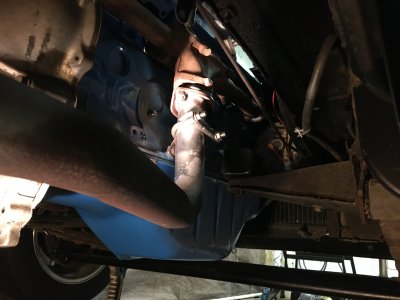I’m trying to revive a ‘64 ranchero I got from my uncle. I have pretty minimal mechanical experience but am working my way through it with the help of people who do. I have an exhaust leak which looks to be coming from the manifold and definitely where the manifold attaches to the exhaust pipe. My mechanical advisor seems to think I am pushing oil through and that it’s leaky valves or a head gasket. I suspect it could just be a bad manifold gasket seal? I replaced the manifold gasket myself a few weeks ago and didn’t use any RTV sealant or anything. A couple of the bolts were rusty but didn’t seem too bad so I reused those as well. Also, there was no gasket where the manifold attaches to the exhaust pipe but I know they make “donut gaskets” for this connection. I plan to do a compression test before I do anything else but any further advise would be helpful. Thanks.
Also, I wanted to add that the car has been garaged and not running for about 5 or 6 years and that exhaust coming from the tailpipe and the leaky manifold is not clean. Not super black either but is definitely burning some oil up from somewhere.
Also, I wanted to add that the car has been garaged and not running for about 5 or 6 years and that exhaust coming from the tailpipe and the leaky manifold is not clean. Not super black either but is definitely burning some oil up from somewhere.
Last edited:


